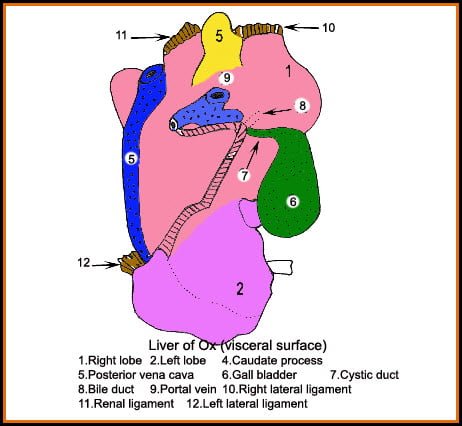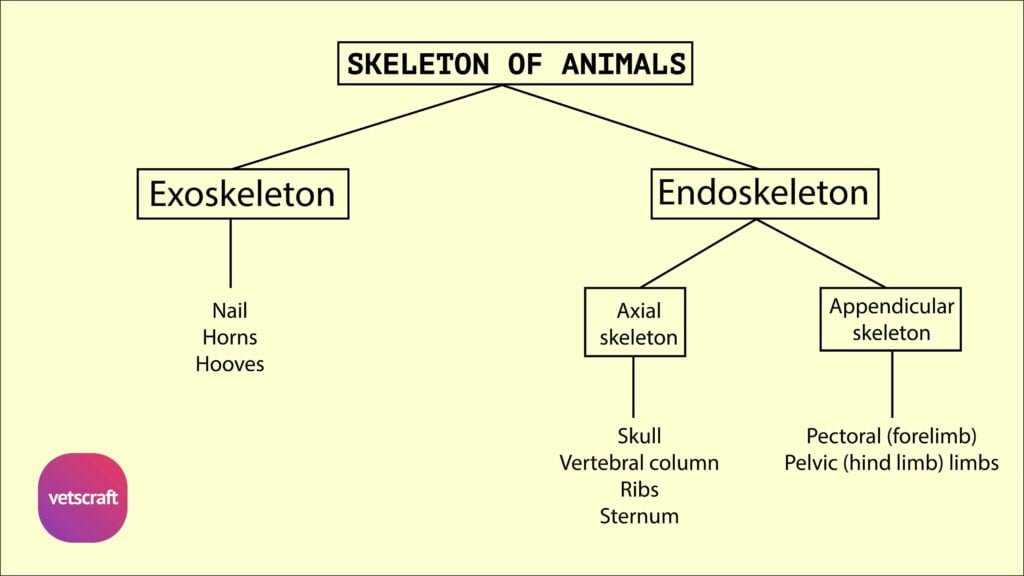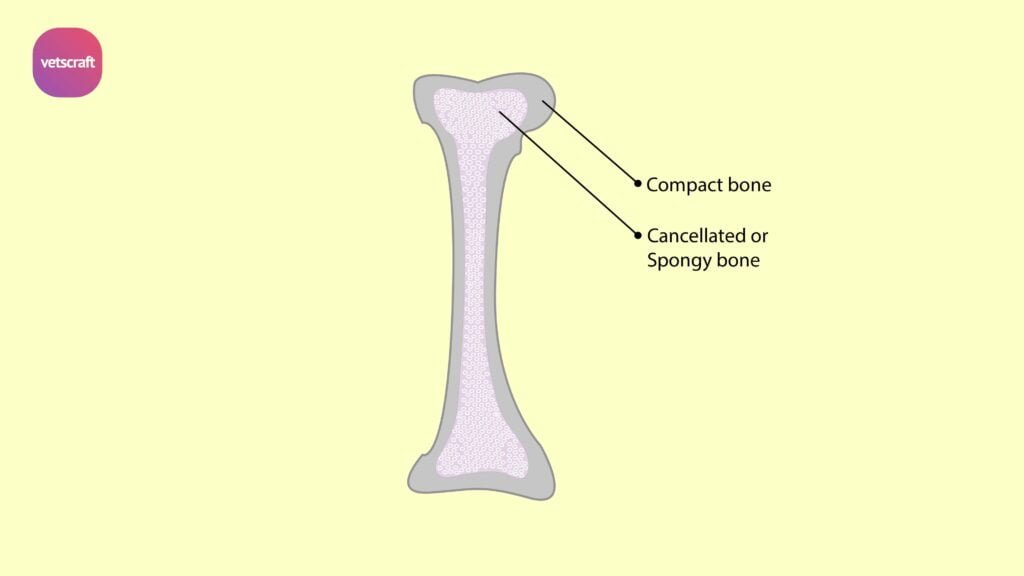TABLE OF CONTENTS
Liver of Ox
Liver is the largest gland in the body which occupies the abdominal cavity

- Liver lies in the abdominal cavity almost entirely to the right of the median plane and extends obliquely downward and forward from the lumbo-costal angle to the level of 8 th rib.It is red brown in colour
- Its average weight is about 4.5 to 5.5 kg. It is strongly curved and is accurately adapted to the abdominal face of the diaphragm. It presents two faces and four borders
- The parietal surface is convex and is for the most part applied against the right part of the diaphragm and a small part of it is in direct contact with the last two ribs and flank at the lumbo -costal angle
- It is marked by an oblique ridge, which divides this face into two areas
- The falciform ligament is attached to this surface and extends from the oesophageal notch to the umbilical fissure
- A small area at the dorso medial part of this surface has no peritoneal covering as it is adherent to the diaphragm
- The visceral surface is concave and very irregular. It presents impression of the organs with which it is in contact
- Omasal impression
- Reticular impression
- Cystic impression
- The portal fissure is a well-defined depression situated dorsal to the omasal impression
- It contains besides vessels, the bile duct and several large hepatic lymph glands. Dorsal and lateral to it, a part of the pancreas is attached
- The dorsal border is short and thick. It presents the large, thick quadrilateral caudate lobe and a deep depression, renal impression of the right kidney and adrenal
- The ventral border is short and thin
- The right border is marked by the umbilical fissure in which the round ligament is attached
- The left border presents the oesophageal notch below its middle. Above this, the border is median in position and lodges the caudal vena cava, which is embedded in the gland
Ligaments of Liver
- The right lateral attaches the dorsal border to the sublumbar region
- Caudate ligament attaches the caudate lobe to the ventral face of the right kidney
- The falciform ligament is a crecenteric fold, which attaches the sternal part of the diaphragm to the parietal surface of the liver
- The round ligament, which is in the free border of the falciform ligament, extends from the umbilical fissure to the umbilicus
- The lesser omentum attaches the liver from the oesophageal notch to the portal fissure with the parietal face of the omasum
- Cranial face is adherent to the diaphragm
- The caudal vena cava embedded in its left border holds it in position
Gall Bladder
The gall bladder in Ox is a pear-shaped sac 4 to 6 inches long, which lies partly on the visceral surface and largely in contact with the abdominal wall at the ventral part of the 10th or 11th intercostal space. Its neck is continued by the cystic duct, which joins the hepatic duct to form the common bile duct – ductus choledochus, which opens into the ventral part of the S-shaped curve of the duodenum

